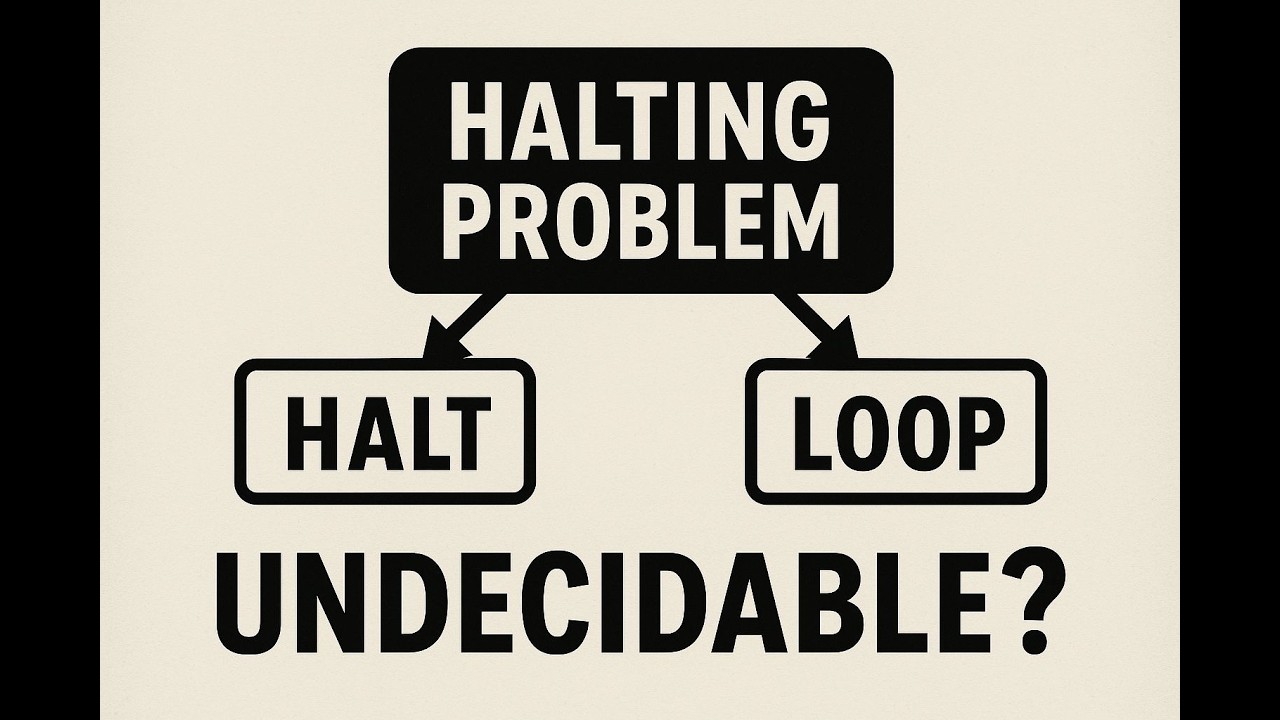The video explores the halting problem through research aided by ChatGPT-3, explaining its undecidability, implications for computation, physics, and self-reference, and drawing parallels to biological systems. It emphasizes the theoretical limits the halting problem imposes on knowledge while highlighting practical approaches and the creator’s plan to develop a research app inspired by these insights.
In this video, the creator explores how they conduct research using ChatGPT-3 (referred to as 03) on complex topics, focusing on the halting problem after hearing about it in a podcast discussing recent mathematical results related to computability and physics. They begin by explaining the halting problem: whether it is possible to determine if any given computer program will eventually stop running or continue indefinitely. The creator initially thought calculating the digits of pi might be an example of the halting problem but learned that since pi is proven to be irrational, the program calculating its digits runs forever, so it does not fall under the halting problem’s undecidability.
The video then delves into the fundamental nature of the halting problem, referencing Alan Turing’s 1936 proof that no universal algorithm can decide for all programs whether they halt or run forever. While some restricted classes of programs with finite bounds can be analyzed, the general problem remains undecidable. The creator highlights the practical implications of this, noting that although perfect halting deciders are impossible, semi-decidable heuristics and approximate tools exist for specific cases. This leads to a broader philosophical discussion about the limits of mathematics and computation in understanding the universe.
The creator discusses the implications of the halting problem for physics and science, emphasizing that if the universe is computable by a Turing machine, then there are fundamental limits to what can be predicted or known. They explore the relationship between Gödel’s incompleteness theorems, Turing’s halting problem, and the idea that mathematics inherently contains true but unprovable statements. The video also touches on the concept of hypercomputation—hypothetical computational models beyond Turing machines—and concludes that current physical theories do not support such models, reinforcing the halting problem as a hard boundary for scientific knowledge.
A significant portion of the video is dedicated to the concept of self-reference and its role in undecidability. The creator explains how self-reference, such as a program analyzing its own code or Gödel’s self-referential statements, leads to paradoxes and undecidable problems. They extend this idea to biology, illustrating how DNA and cellular processes embody a form of physical self-reference, where genetic code encodes instructions for producing proteins that act on the DNA itself. This biological analogy helps ground the abstract logical concepts in tangible natural phenomena, showing how undecidability emerges in complex systems.
Finally, the creator reflects on the practical importance of understanding the halting problem. While it sets theoretical limits on ultimate prediction and complete knowledge, it does not hinder everyday scientific and engineering tasks, which often deal with restricted or approximate models. Recognizing these limits helps scientists set realistic goals and choose appropriate methods, such as probabilistic algorithms and heuristics, when exact solutions are impossible. The video concludes with the creator’s intention to build a research app inspired by this exploration and invites viewers to share their thoughts on this approach.
